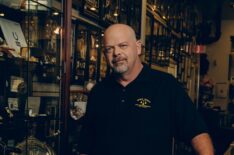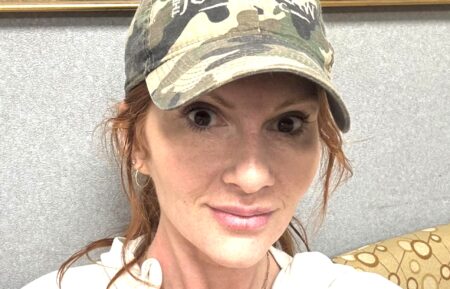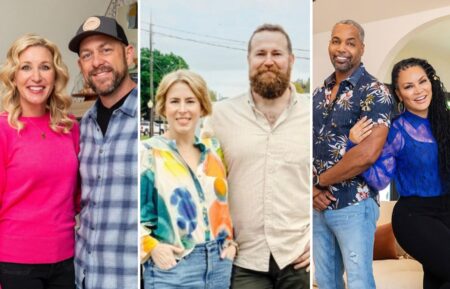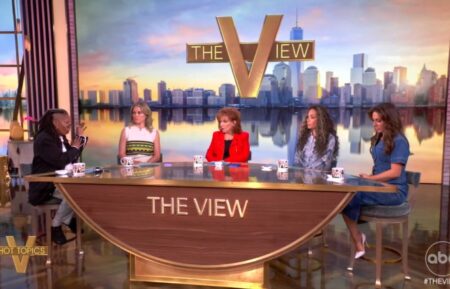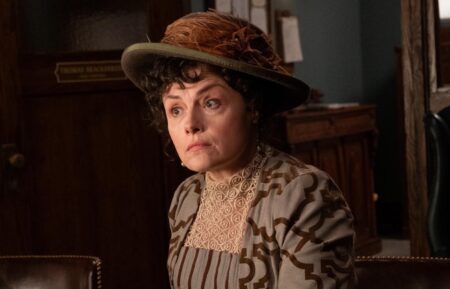‘The Food That Built America’: Adam Richman Talks Coffee Wars, Bad Decisions & What’s Next on Show
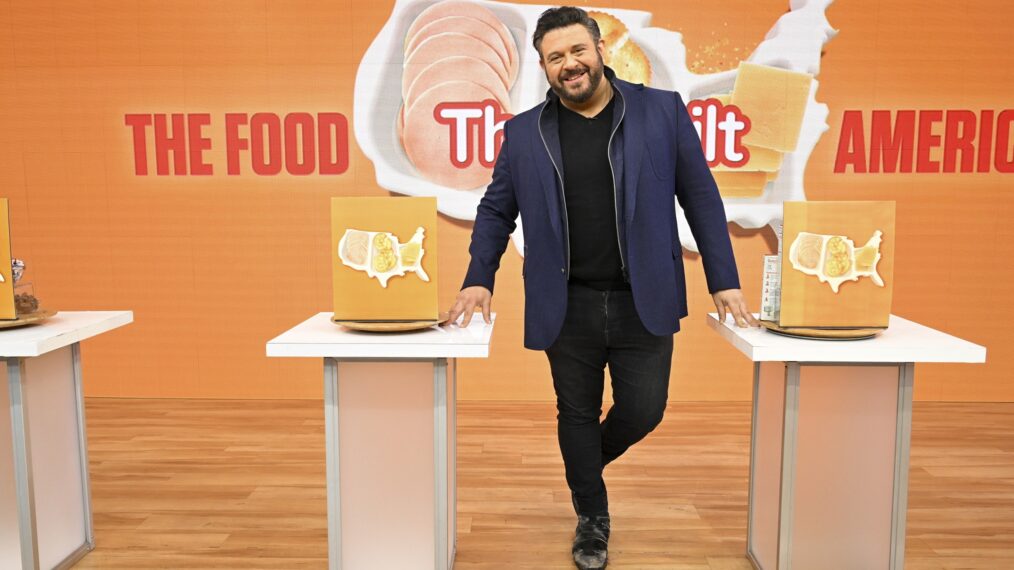
Q&A
History Channel has been feeding the hunger and quenching the thirst for more The Food That Built America. During Season 6 the network already served up fascinating brand and product origin stories and the innovators and entrepreneurial visionaries behind them. So far episodes have centered on tortilla takeovers, movie theater munchies, a baked chocolate chip bonanza, convenience store staples and titans of the mall food court.
The next installment on March 30 is about how Jim Folger discovered a new way to bring coffee to the masses. This opened the door to a battle for java supremacy when Maxwell House entered the arena. From there came at-home inventions that transformed mornings for households thanks to Mr. Coffee machines and most recently Keurig coffee makers. .
Helping set the scenes are quality reenactments alongside experts on the topics tackled including Adam Richman. Known for hosting shows like Man v. Food, Modern Marvels and Adam Eats the 80s, he has been a regular contributor of the series since its inception in 2019. We connected with Richman to talk about what we’ve seen this season and what’s on the menu to come.
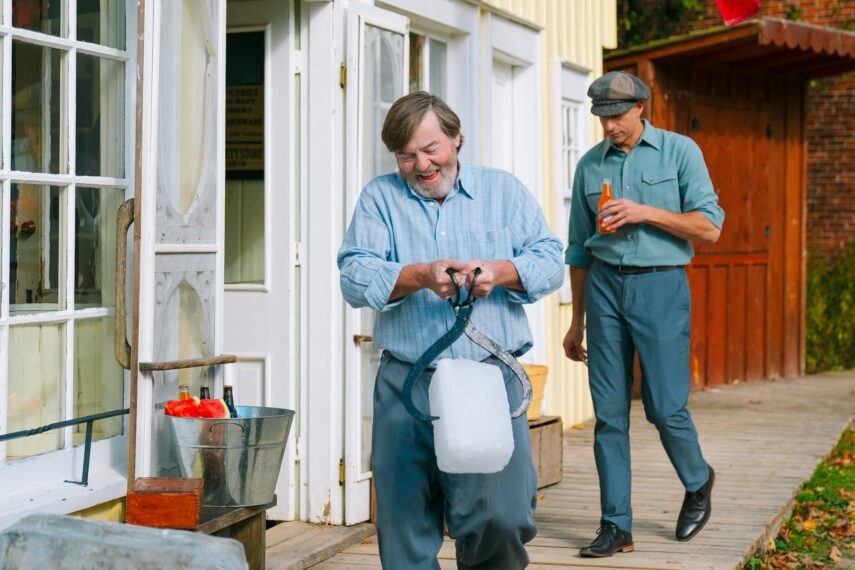
Uncle Johnny of Southland Ice delivers ice to a customer who enjoys beverage while he waits. (History Channel)
We’re about halfway through the season. What were your thoughts on the episodes that aired? I loved going being reminded of the glory days of malls and movie theaters through food.
Adam Richman: It’s always so impressive because I never really get to see the recreations when I film my part. I know what they are going to recreate roughly. For example I may get something like Pizza Hut tries to buy Dominos. I don’t get the minutia. The mall episode one you mentioned was particularly affecting to me because I filmed another show for History Channel at the first Auntie Anne’s, at the first Panda Express, at the second Cinnabon ever with the son of the founder. Having been to the actual locations and met some of the actual people like the man who created orange chicken for example. It’s really fascinating to see how a slice of life is brought to the screen in a really fascinating way.
What makes the show’s popularity and evolution?
I’m just grateful. I was invited to be a contributor for Season 1. You hope the show is a success, but to be here six seasons later and to have been part of The Food That Built, Mega-Brands That Built, Toys That Built, Icons That Built America and so on is just galvanizing. I think the success goes back to the constant feeling of, “No way, I had no idea.” It’s not like you’re watching a show about a land mammal in Africa you’d never see in real life really. These are the brands we consume. These are the brands that are part of our everyday lives.
To see the human stories behind them and have a different accountability to the foods we eat, I think that is what people are interested in. As I’m talking to people about it, it really seems to be a very big part of civic or local pride. Whether it’s Campbell Soup in New Jersey or the like, I think people take tremendous pride that a business started in their backyard is now a cultural icon.
You almost have this emotional connection to the food. Like when you hear these brands, it sparks memories like growing up or a moment in time. I think that also plays into the popularity.
There is definitely this profound sense of nostalgia, especially if it’s a food or a type of restaurant that has given way to a competitor or brand or modernization. Or maybe it’s something that reminds you of a relative that passed or of a simpler time in your life. That’s the transformative power of food.
What struck you about the upcoming coffee episode coming up March 30?
As someone who rooted for the Yankees, Joe DiMaggio was the first food influencer kind of. I think it’s funny you can’t pick up Instagram without having someone you follow trying to sell you something or expel the virtues of some kind of product. To know “the Yankee Clipper” was ahead of the curve or time promoting Mr. Coffee. To know and learn about the rise of coffee at the Maxwell House Hotel. People know Maxwell House as a brand, but now know it as a hotel. Also, I’m a big coffee guy…I grew up with my great aunt making Maxwell House or Chock full o’Nuts. Coffee is something we kind of take for granted, but it’s hard to believe that over a half century ago people had to roast their coffee at home and grind it themselves. Now we can walk probably 30 paces in any direction to get a cup of coffee somewhere.
Fascinating these stories go all the way back to the California Gold Rush.
I think Jim Folger is very much indicative of the fact that during the Gold Rush, it wasn’t the prospectors that got rich. It was the people selling pans and other items. He saw the prospectors were fueled by coffee and he was going to get it to them. I think these incredible entrepreneurs throughout the 1960s of The Food That Built America are visionaries of seeing a void and finding a way to fill it.
Also, with Folgers, it really shows how a marketing campaign or a slogan or something people can connect with can have such an impact on sales and how they broke through in the marketplace.
Absolutely, well said.
Another thing about this episode centers on K-Cup inventor John Sylvan, who walked away from the company and sold his ownership of the product for $50,000. Even though we know Keurig Green Mountain went on to make billions, he regrets even inventing the K-Cup. So he stands by his decision all these years later.
What would you have said if you were the guy who walked away from millions? Would you go, “I made the wrong decision or would you go, “I stand by it.” You always have to consider the source. Magic Johnson, had he taken the Nike deal instead of going with Converse would have made a massive amount of money. However, he went with an established brand rather than going with this upstart renegade.
It would have been an undeniable fortune, so I don’t think there is any titan that has made his or her way to the top without ruffling a few feathers or stepping on a few people and crushing a few competitors. That type of truthfulness is sort of the nature of the free market system of capitalization…I think, yeah, you’re going to find people who say they are okay with the choices they made to walk away because I think you have to tell yourself that when you got 50 grand rather than millions and millions of dollars that.
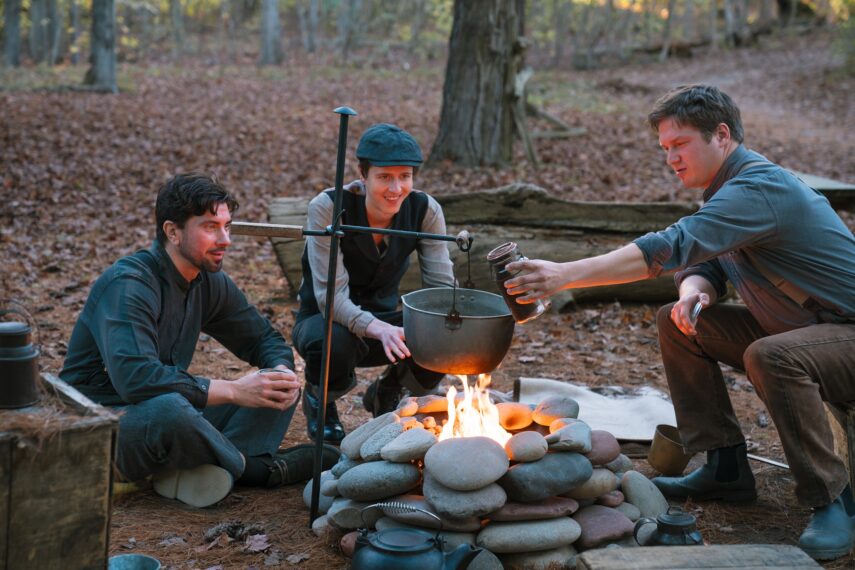
Jim Folger’s brothers look at his new coffee at their campsite. (History Channel)
George Foreman recently passed away, and it got me thinking about when Hulk Hogan said he missed out on the George Foreman Grill branding opportunity after missing a call from his agent at the time.
Listen, I was offered a part on the ABC show The Chew, and I turned it down. Hindsight is always 20/20. You can only kind of go with your guy. Sometimes your gut will lead you toward a lucrative decision and sometimes your gut will lead you to the decision that is regrettable. I think ultimately, maybe this man made peace with that. Maybe that’s okay with him. If the George Foreman Grill ended up being a gimmick and unhealthy and subjected George Foreman to ridicule, Hulk Hogan would say he was a genius and that he dodged a bullet…Craig Bierko turned down Friends. You make your best decision with the tools at the time of what you believe you can live in.
Sometimes you win, sometimes you lose. Some people have a great track record and luck on their side, but I think that is ubiquitous for The Food That Built America. You find visionaries that cometh the moment, cometh the man kind of vibes. Also, you find people that have opportunities like Herman Lay realizing the war is over and he could buy cheese powder on the dollar. Let’s take these corn puffs we have and douse them with cheese. Cheetos was born. It can go a number of ways.
After the coffee-centric episode comes boxed chocolates, beer, Asian food and Jack Daniels. What are you most excited about in the coming weeks?
I have an affinity for all of them. I know that sounds like who do you love more, mom or dad, but I truly do. I feel a connection. Russell Stover, Whitman’s, Almond Joys, and Mounds. I remember getting my aunt Russell Stover and Whitman’s every Valentine’s Day. I remember working with my cousins to decipher the map on the lid of the box trying to make sure none of us got that weird, fruit, nuggety thing that was gross. I lived in St. Louis for a while, so the story of Anheuser Busch is something that I feel a connection to. I know the guys who created Spud Mackenzie, Budweiser frogs and Real Men of Genius, I know about their marketing campaign on an intimate level. I lived in the South for a third of my life. So I obviously have a deep affinity toward Jack Daniels as a brand and legend.
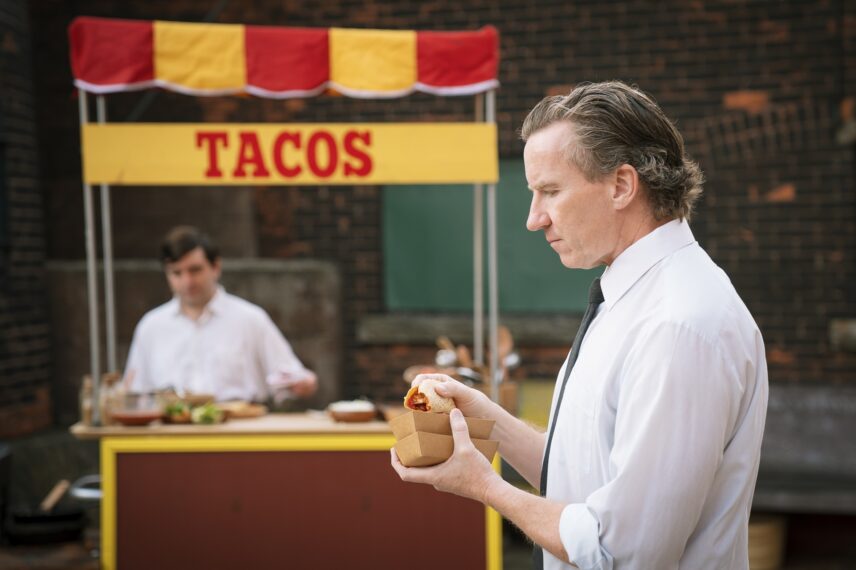
A Mexican Cook looks on as David Pace eats a taco he made. (Photo Credit: The HISTORY Channel and Lucky 8)
Is there something that you want to see covered in the future? For me what has been top of mind has been this Boba tea craze.
I think the ultimate thing for Boba tea would be to find a linchpin to a brand per say because we’re not doing beer in general. We did Schlitz, Pabst and Anheuser Busch. We’re not doing fried chicken in the abstract. We have KFC, Popeyes, Dave Thomas at Wendy’s and Chick-fil-A. I think in terms of brands I would like to know more Asian brands that broke through. I just did an interview with Kevin Smith and people are moving into a more vegan type of lifestyle. So now you have MorningStar Farms and Boca burgers in the marketplace. So you could do something on the rise of vegetable protein, so you have the Impossible Foods story, MorningStar Farms and all these alternative milks. That’s fascinating because when they first came out, even before I tried them, I thought it was people wearing Teva sandals who kayaked on the weekend. Now you find I have them in my own freezer right now. Impossible sliders are on the White Castle menu.
I’d love to go deeper with Hebrew National and Sabrett. I love the ones where there was a store that then started seeing Michael’s of Brooklyn and Rao’s their pasta sauce being sold in places like Whole Foods. I think those are all compelling stories. I even think in terms of the candy lexicon. We’ve done stuff with Halloween candy, but like Fun Dip, Ring Pop and sort of the candies of youth. We’ve done some near and dear to my heart like Carvel and Entenmann’s, being a Brooklyn guy. There is always going to be something interesting. I’ve never studied Hellmann’s and Best Foods story, so I’d like to learn a little about that. There are so many things we see in our day-to-day life. So many compelling things.
Sounds like you have another 20 seasons with all this material.
From your lips to God’s ears.
The Food That Built America, Sundays, 9/8c, History Channel


